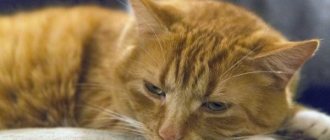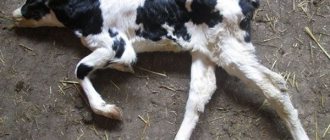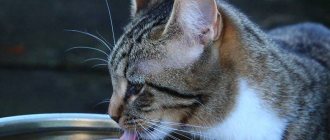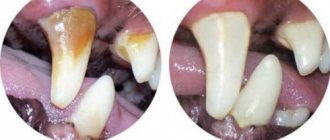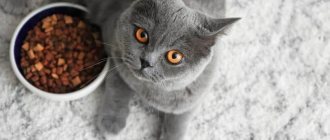Causes of cataract development in cats
The visual system of the eye in domestic animals is represented by the lens. This biconvex lens serves to refract and focus visible light entering the retina.
When substances of organic and mineral origin accumulate in the lens tissue, cell degeneration, denaturation and death of protein structures, and thickening of the lens capsule develop. The lens becomes covered with epithelial cells and loses its ability to refract sunlight.
Veterinary experts attribute a whole list of factors to the reasons for the development of a pathological process in the optical system of the eyes of domestic cats.
| Causes of cataracts in cats | Rationale |
| Aging of the body | For the lens to function normally, it must maintain a certain balance of protein, minerals and water. In old age, an animal experiences metabolic disorders, a slowdown in the metabolic process. This leads to the fact that fat and protein deposits, cholesterol, calcium and phosphorus salts begin to accumulate on the surface of the lens. The amount of fluid in the lens decreases. |
| Injuries, mechanical damage to the organs of vision and skull | Bruises, entry of a foreign body into the eye system, or the animal bumping into foreign objects leads to damage to the visual cells and the transition of the inflammatory process to the lens with its further clouding. |
| Concomitant ophthalmological diseases | Cataracts can be secondary in nature and develop as a result of chronic eye diseases such as conjunctivitis of various origins, glaucoma, iridocyclitis, entropion and eversion of the eyelids. |
| Malfunction of the hormonal system | Diabetes mellitus is often the cause of the disease. Decreased insulin production leads to increased blood sugar levels. An increased amount of glucose begins to enter the lens of the eye, causing its degeneration and cell destruction. Cataracts often develop with urolithiasis due to increased deposition of calcium and phosphorus salts in the lens tissue. An ophthalmic disease is also diagnosed when a pet is obese. In this case, a failure in metabolism and metabolism leads to destructive processes in the optical system of the eye. |
| Allergic reactions | An allergy to one or another factor leads to the appearance of histamine-like substances, serotonins, in the blood. These mediators of the allergic reaction are active and have various effects on organs and tissues, including cytotoxic ones. Cataracts often develop as a result of prolonged exposure to an allergen. |
Veterinarians also include infectious and parasitic diseases, exposure to chemical substances in the organs of vision, radiation injuries, and chronic intoxication of the body as causes that provoke the development of the disease.
We recommend reading about heart defects in cats. You will learn about congenital and acquired heart defects, the reasons for their development, symptoms, diagnosis, and treatment options in animals. And here is more information about hypertrophic cardiomyopathy in cats.
Causes of the disease
The following factors can trigger the occurrence of cataracts in cats:
- Aging of the body. Age-related changes cause a slowdown in metabolism, as a result of which the required ratio of water and proteins is disrupted, which provokes cloudiness.
- Traumatic injuries. This may include a blow to the forehead, temple, damage to the eye from sharp objects, and falls.
- Diseases. Cataracts in cats can be caused by diabetes, conjunctivitis, the presence of kidney stones, diseases of the endocrine system, and excessive body weight.
- Poor nutrition. The lens may become cloudy due to prolonged fasting or overeating, poor-quality complementary foods, or insufficient water intake by the animal.
- A sharp increase in intraocular pressure.
- Use of certain medications. An incorrectly selected course of glucocorticosteroids may be to blame.
- Allergy. The disease may be caused by prolonged exposure to the allergen on the cat’s body.
Owners may notice that the animal has become less able to navigate in the dark.
In the early stages of cataract development, there are usually no symptoms, so identifying the pathology is quite difficult. The cat successfully compensates for the initial deterioration in visual functions with its sense of smell and excellent hearing. As the disease progresses, signs begin to appear, the animal becomes less oriented in a room that was previously familiar to it, and begins to bump into objects and people. The greatest deterioration of vision is observed in the dark.
If these symptoms do not alarm the owner and he does not seek help from a veterinarian, the lenses begin to become cloudy, and the pupil dilates and becomes gray or blue. The previously active pet becomes lethargic, moves much less, and avoids contact with the owner. The increasing deterioration of visual functions makes the cat aggressive.
The main role in the normal functioning of the organ of vision is given to the lens - a transparent biconvex lens that focuses light. The clear lens serves as a conductor for light and images that enter the eye and are analyzed by the brain. Complete or partial clouding of the lens, accompanied by loss of vision, is called a cataract.
Cataracts are the scourge of older animals whose age exceeds 8 years. This is due to the wear and tear of the body's natural resources and slow metabolism.
However, other factors can lead to cataracts:
- trauma to the lens as a result of thermal, chemical burn, foreign body entering the eye, impact, scratches;
- dangerous pathological eye conditions;
- diabetes mellitus, endocrine diseases;
- prolonged exposure to the allergen;
- intoxication of the body (chemical, parasitic).
In addition, cataracts can be caused by viruses and bacteria transmitted by a mother to her offspring during childbirth or in utero.
Before prescribing treatment, the veterinarian should try to determine the cause of the cat's cataracts. The development of this pathology can be affected by:
- genetic predisposition;
- severe injury or contusion, which resulted in disruption of the lens;
- metabolic disorders;
- the appearance of diabetes mellitus;
- taking medications for a long time;
- glaucoma, keratitis and other eye diseases;
- infection or inflammation in the animal's body.
READ Umbilical hernia in dogs: types, causes and treatment options
A high risk of developing cataracts occurs in animals that are malnourished or severely weakened. This condition can be caused by a lack of vitamins, microelements and an unbalanced diet.
Cataracts in cats are in many ways similar to the same human disease. This pathology means clouding of the lens, which is the most important part of the organ of vision. Normally, the lens-like lens is transparent. This is necessary so that the light penetrating the eyes is refracted properly and, when it hits the retina, is transformed into visual images.
The development of cataracts may be due to the following reasons:
- Age-related changes. Over the years, biochemical processes begin to occur in the visual organs, which lead to imbalances in the substances that make up the tissues of the lens, which causes its clouding.
- Intrauterine defects. A congenital disease that develops during the prenatal period occurs in a pet if its mother during pregnancy suffered from helminth infection, exacerbation of chronic ailments, or experienced severe nutritional deficiencies.
- Injuries and infections of the eyes and head. Any damage or infection of the visual organ, as well as improper treatment using inappropriate medications, can cause cataracts.
- Complications of other diseases. Often the disease occurs due to metabolic disorders and related ailments, in particular diabetes.
It has been noted that some cat breeds are more susceptible to developing cataracts. For example, lens clouding is most often observed in Persians and exotic cats, and a little less often in British and Scottish fold cats. Moreover, the risk of the disease increases significantly with age - the vast majority of animals begin to lose vision due to cataracts after 8-9 years of life.
Animals at risk
According to statistics, older animals aged 8-9 years are most susceptible to lens clouding. Having crossed this age limit, the disease tends to progress. Senile cataracts are caused by metabolic disorders and an increase in the amount of free radicals. Their molecules have a strong oxidizing effect and destroy the fragile structures of the optical system of the eye.
If your pet has diabetes, the risk of developing cataracts increases to 20%. Hyperglycemia is the main cause of damage to the eye lens and the development of destructive processes in its tissues or capsule cells.
As for breed predisposition to the disease, lens opacity is most often diagnosed in breeds that have a brachycephalic skull structure. Breeds at risk include: exotics, Persian, British and Scottish cats.
The peculiar structure of the head determines the morphological characteristics of the nutrition of the tissues of the optical system of the eye and provokes the development of destructive processes. It is noteworthy that the disease is extremely rare in outbred felines.
Cat Breeds Predisposed to Cataracts
Scientific research into the problem suggests that the disease is closely related to hereditary factors. Genetic predisposition is observed in all breeds of animals and is associated with the inheritance of defective genes.
Types and forms of cataracts in cats
The ophthalmological disease can be unilateral (one eye is affected) or bilateral (both eyes are affected).
In veterinary practice, it is customary to distinguish between congenital and acquired forms of the disease. A congenital disease is observed due to improper intrauterine development of the animal. It is caused by infectious, parasitic, and fungal diseases of the mother cat during pregnancy. Chronic intoxication and the use of medications during pregnancy also lead to congenital cataracts. As a rule, this form is bilateral.
Anatomical structure of the cat's eye
Acquired clouding of the lens develops as a result of ophthalmological diseases, injuries and mechanical damage to the visual apparatus, endocrine disruptions, for example, in diabetes mellitus.
Veterinarians also distinguish between hereditary, diabetic, traumatic and age-related cataracts based on etiological factors.
The disease can be primary or secondary. Primary cataract is considered as an independent disease. The secondary form is a consequence of a concomitant disease, for example, ophthalmological.
Causes
Lens destruction is considered a multifactorial event. The composition of aqueous humor changes, metabolism decreases, tissue respiration worsens, and toxins accumulate. There are congenital and acquired cataracts - in cats, eye diseases are more often hereditary than age-related.
Congenital form
A kitten is born with a pathology - a consequence of intrauterine toxic damage to the lens. Possible causes: viral infection during pregnancy, calcium deficiency, endocrine disorders, Rh incompatibility.
Cataracts in kittens do not always progress - there are cases of limited clouding without a decrease in visual acuity. The pet is observed for life, without taking action until the development of congenital eye disease is confirmed. But cat cataracts are operated on from an early age, so degenerative changes can be stopped at any time, preventing the situation from worsening.
Acquired form
There are many causes of cataracts in cats. Sometimes this eye disease is diagnosed as idiopathic - the doctor does not find the factor that influenced the changes in the structure of the lens. Types of acquired cataracts:
- Hereditary can be congenital, but more often the lens begins to become cloudy in the period from 2 to 6 years. Confirmed by genetic tests.
- Age-related cataracts develop after 8 years of age. It usually progresses slowly, which allows time to prepare for surgery.
- Traumatic – a response to damage to the lens and/or cornea. Contusions, penetrating wounds, thermal effects.
- Complicated – a consequence of another eye disease: cataracts in cats due to glaucoma, retinal detachment, uveitis, iris dysfunction.
- Toxic occurs due to long-term use of corticosteroids, drugs for epilepsy, poisoning with thallium, naphthalene, and overdose of certain drugs.
- Diabetic is a consequence of an increase in glucose levels in the lens. These cataracts are usually mild and quickly progress to blindness.
Cloudiness can develop due to an allergy to food, litter, parasites, or household chemicals. Even when the allergy is expressed only by dandruff, slight lacrimation or unobtrusive itching, substances toxic to cells accumulate in the lens.
Symptoms of cataracts in cats
The initial stages of the disease, as a rule, go unnoticed by the owner and household members. The animal’s body compensates for decreased visual acuity with hearing and smell.
When the pathological process begins to affect the optical areas of the lens, the first signs of ophthalmological pathology begin to appear. The cat has poor orientation in an unfamiliar room and bumps into objects. When playing with an animal, the owner notices that the pet often misses and cannot catch its favorite toy. Visual acuity is lost primarily in twilight and darkness.
With the subsequent development of destructive processes in the lens, the owner can visually observe its clouding. The animal's pupil is noticeably dilated. It takes on a bluish or grayish tint. A whitish-gray film is often observed in the pupil area. The cat is in a depressed, lethargic state. Moves little, avoids active games. As blindness develops, the pet becomes fearful or aggressive.
Symptoms of the disease
The main symptoms of cataracts in cats are:
- the appearance of a spot or film on your pet’s eyes may indicate that the lens has become cloudy and has ceased to perform its main function. Self-medication in this situation is unacceptable, since many eye diseases develop with the same or very similar symptoms. All of them are treated with special means and methods, so consultation at a veterinary clinic is required;
- if this condition is hereditary, then in a kitten it can be noticeable from the first days or appear with age. That is why owners of breeds that are especially prone to the disease, as well as those who know that the kitten’s parents (grandparents) have a similar problem, need to examine their pet’s eyes especially often and have them examined by a veterinarian at least once a year;
- With cloudiness in the eyes, the animal begins to see worse. If the owners notice that the cat moves uncertainly, has stopped jumping on high furniture, plays and runs less, they should suspect that he has vision problems.
Just like in humans, cataracts progress gradually in cats. To prevent the animal from becoming completely blind, adequate measures must be taken as early as possible.
Only an experienced veterinarian can choose a treatment method and select the necessary medications, and doing it on your own can easily harm your pet.
Stages of cataract development in an animal
In veterinary practice, the following stages of ophthalmological disease are observed.
| Cataract stages | Description | Photo |
| Initial | The peripheral part of the optical system of the eye is involved in the pathological process. The opacification does not affect the central segments of the lens. At this stage, the cat begins to have difficulty distinguishing the contours of objects, and visual acuity deteriorates. It is almost impossible for the owner to suspect ophthalmological problems in an animal, since the cat has not lost the ability to navigate in space, and the signs of visual impairment are still subtle. | |
| Immature | This stage is called swelling. A blue or whitish haze is observed in the optical system. Visual acuity decreases, the cat sees only the outlines of objects. The animal is poorly oriented in space, coordination of movement when playing and jumping is impaired. Visual acuity decreases in twilight and darkness. | |
| Mature | The stage is characterized by the fact that the entire lens loses its transparency. The pupil is constantly dilated. A cat navigates in space using other senses. The owner observes that the animal bumps into foreign objects, does not participate in games, and becomes inactive and lethargic. | |
| Overripe stage | At this stage, complete loss of vision occurs. The lens undergoes destruction, a change in anatomical shape, and complete disintegration of the lens is possible. |
The stages of the disease are taken into account when prescribing treatment, choosing methods of conservative or surgical therapy, and are also important for further prognosis.
Diagnosis of cataracts in cats
When making a diagnosis, a veterinary specialist relies not only on the characteristic signs found during a visual examination of a furry patient, but also on the basis of special examination methods. An ophthalmologist will conduct an examination using side illumination and biomicroscopy. To identify the exact localization of clouding of the optical system of the eye, the retroillumination method is used.
Ultrasound of the eyeball in a cat with cataracts
Often, a veterinarian performs an ultrasound examination of the visual organs, as well as electroretinography of the retina. After a comprehensive ophthalmological examination, diagnosing the disease is not difficult.
Diagnostics
The lens is conventionally divided into two parts by the equator line. The anterior part of the capsule is lined with epithelial cells. In cross section it resembles an onion - as the epithelium grows, the layers of fibers become denser towards the center, forming a core. Between it and the wall of the capsule is the cortex.
Before choosing a behavioral tactic, it is important to establish the localization of the cataract. You can’t ask the cat what she sees, and during a routine examination, the veterinarian will only determine the presence of clouding, but not its type. Therefore, you need to contact ophthalmologists at a clinic equipped with the equipment necessary for a deep examination of the eye.
| Type | Location |
| Polar | Anterior polar - a spot under the capsule at the anterior pole, posterior polar - at the posterior. Two spots – anteroposterior polar cataract. |
| Fusiform | A chain of punctate opacities, shaped like a spindle. Passes through the center of the lens from the anterior to the posterior pole. |
| Layered | In one or more layers around the core. Turbid layers alternate with transparent ones. |
| Layered peripheral | Cloudiness of the layers at the periphery, does not merge into rings around the core. |
| Cup-shaped or posterior subcapsular | Cloudiness and thickening of the back layer of the lens. |
| Nuclear | It appears in the core, slowly filling it completely. As a rule, vision decreases over the years, gradually. |
| Cortical | Changes in the anterior and posterior cortical layers are uneven, often sluggish in both eyes. |
Total cataracts in cats are a disease of both eyes in which the lens material turns into a cloudy mass. Progresses rapidly to blindness and requires immediate intervention. In any case, it is advisable to conduct a full range of studies using a slit lamp, measuring intraocular pressure, and examining the fundus.
In the later stages of cataracts, it is not possible to assess the condition of the fundus using an ophthalmoscope. Ultrasound is indicated to exclude destruction of the vitreous body, retinal detachment and other concomitant eye diseases.
Treatment of cataracts in cats
The choice of treatment strategy depends primarily on the stage of the cataract. If the disease is detected in the initial phase, the veterinarian usually chooses drug therapy. In later stages of ophthalmic disease, surgical treatment methods are used.
How to treat with medication
Conservative therapy is aimed at stopping degenerative processes in the optical system of the eye.
For this purpose, eye drops are used: Taufon, Vicein, Quinax, Catalin, Vitafacol. Medicines activate metabolic processes, improve tissue nutrition, and slow down the deposition of protein structures in the lens.
The drugs are prescribed in courses. Treatment should be carried out under the supervision of a veterinarian, as various complications are possible.
The use of proteolytic enzymes, for example, papain, chymotrypsin, has a good effect in slowing down the clouding of the lens. Tissue preparations and immunomodulators are also used in therapy.
Vitamin therapy plays an important role in the fight against destructive processes. Animals with cataracts are prescribed ascorbic acid and vitamin B2 (riboflavin).
The owner must be prepared for the fact that conservative treatment methods will not produce the desired effect. In this case, the issue of surgical intervention is decided.
Before and after conservative treatment of cataracts
The operation and its features
In veterinary practice, there are several methods of surgical treatment of cataracts:
- Extracapsular resection . The disadvantage of this method is a fairly large incision and a decrease in intraocular pressure. Removal of the lens nucleus occurs while preserving the posterior and central capsule.
- Intracapsular resection . The lens is extracted together with the capsule. Used in cases of early lens removal.
- Phacoemulsification . A special ultrasound probe is inserted through a small incision. With its help, the lens is liquefied and removed. One of the progressive methods does not require sutures.
In some cases, the doctor can suck out pathologically altered masses of the lens through a puncture of the cornea with a special probe. The method is not widely used due to the high risk of recurrent disease.
After extraction of the pathologically altered organ, an artificial lens is implanted in its place. For this purpose, special surgical tweezers or injector syringes are used. The intraocular lens fully refracts visible rays and provides the necessary visual acuity for the pet.
To see what cataracts look like due to trauma and phacoemulsification, watch this video:
Treatment options
Treatment of a pathological condition in the lens of the eye in cats using conservative methods is advisable only in the initial stages, when the pet does not have serious disturbances in vision and orientation. As a medical treatment for cataracts in cats, veterinarians recommend and prescribe drugs that improve osmosis and metabolic processes in the eye.
The following tools are widely used:
Treatment without surgery rarely gives positive results in the second and subsequent stages, since the administration of drops can only slow down the development of pathology. The main treatment is surgical excision.
The owner of the animal must remember that in addition to the lack of results from drug treatment, complications may develop. Thus, if surgical intervention is refused, the cat owner must be prepared for the possible development of complications due to cataracts, such as lens-induced uevitis, swelling cataract, acute increase in intraocular pressure, and autoimmune panophthalmitis.
Against the background of mature cataracts, uevitis develops, characterized by a change in the color of the iris, the formation of synechiae and fibrovascular pupillary membranes. Often a complication of ordinary cataracts is swelling, characterized by a sharp decrease in visual function and increased pressure inside the eye.
Swelling cataracts are characterized not only by a rapid decrease in visual function, but also by the presence of a shallow anterior chamber, a rigid pupil, and, as a consequence of all this, an increase in intraocular pressure. A swelling cataract requires immediate removal of the lens, as the capsule may burst, releasing the vitreous humor into the anterior chamber (the contents of the eye leak out).
This pathology develops into autoimmune panophthalmitis, which develops as a result of the body’s reaction to toxic substances during lysis of the intraocular membranes. Panophthalmitis occurs acutely and abruptly, ending in complete death of the eye.
Recovery and care for the animal
The success of the operation largely depends on a competent rehabilitation period. The animal is prescribed a course of antibacterial therapy. Ophthalmic eye drops are used to relieve soreness and swelling of the cornea.
In order to prevent postoperative complications, the animal is put on a collar. It will protect against scratching and mechanical damage to the operated area.
During the rehabilitation period, monitoring the condition of the operated eye by a veterinary specialist is important. The inspection is carried out once a month for six months.
We recommend reading about peritonitis in cats. You will learn about the types of peritonitis, routes of infection with viral and infectious peritonitis, symptoms, diagnosis and principles of treatment of peritonitis. And here is more information about the methods of treating cirrhosis in cats.
Prevention of cataracts in cats
You can reduce the risk of developing an ophthalmic disease by following the recommendations of professional ophthalmologists:
- Avoid injury and mechanical damage to your pet's eyesight.
- After 8 years, the animal should be regularly examined, including by an ophthalmologist.
- Treat concomitant diseases (diabetes mellitus, urolithiasis, etc.) in a timely manner.
- Do not allow ophthalmic pathologies such as conjunctivitis, iridocyclitis, etc. to become chronic.
- Enrich the diet with vitamins A, C, group B and minerals.
Cataracts in domestic cats are a common eye disease. There are many reasons for the development of the disease - from genetic predisposition to diabetes. The main method of treating eye pathology is extraction of the damaged lens followed by implantation of an artificial lens.
Similar articles
- Cirrhosis in cats: symptoms of liver damage, treatment...
It is not easy to identify cirrhosis in cats, since symptoms appear when the liver is severely damaged. Read more - Peritonitis in cats (viral, infectious, dry...)
The disease peritonitis in cats comes in different forms - viral, infectious, dry, wet, purulent, etc. The reasons for it are also different. Read more
- Hypertrophic cardiomyopathy in cats: symptoms...
A heart pathology called hypertrophic cardiomyopathy is less common in cats. Read more
- Heart defects in cats: types - congenital...
Suspicion of heart disease in a cat: signs, diagnostic methods and treatment of the disease. ... Congenital and acquired heart defects in cats. Read more
- Heart disease in cats: organ structure, heart disease...
Congenital heart defects in cats. Short description. Atrioventricular atrial septal defect. Read more
